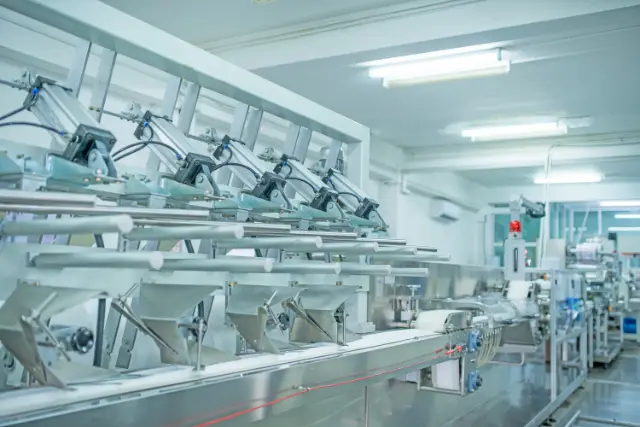Revolutionizing Order Processing: Embracing Automation for a Seamless Supply Chain
In today’s fast-paced supply chain landscape, order processing is a pivotal process that can make or break a company’s efficiency and customer satisfaction. The traditional approach to order processing, involving manual data entry and validation, is prone to errors and delays, leading to dissatisfied customers and operational inefficiencies.
Order Processing Automation: A Game-Changer for the Supply Chain
To address these challenges, businesses are increasingly turning to automation solutions powered by Python, AI, and cloud computing. These technologies have the potential to transform order processing, making it faster, more accurate, and less labor-intensive.
By automating repetitive tasks such as data entry, validation, and order creation, businesses can free up their human workforce to focus on more strategic initiatives. Automation also eliminates the risk of human error, ensuring that orders are processed accurately and efficiently.
The Power of Python, AI, and the Cloud
Python is a versatile programming language that is ideally suited for automation tasks. Its simplicity and readability make it easy for developers to create robust and scalable automation scripts. AI algorithms can be integrated into the automation process to handle complex tasks such as order validation and fraud detection.
Cloud-based solutions provide the necessary infrastructure and scalability to support automation at a large scale. Businesses can leverage cloud platforms to host their automation scripts and access powerful computing resources on demand.
Benefits of Order Processing Automation
The benefits of order processing automation extend far beyond cost savings and efficiency gains. Automated order processing can:
- Improve customer satisfaction by reducing order processing times and eliminating errors
- Enhance supply chain visibility and control by providing real-time updates on order status
- Reduce the risk of fraud and chargebacks by implementing robust validation mechanisms
- Free up human resources to focus on higher-value tasks, such as customer relationship management and product development
Conclusion
Order processing automation is a transformative technology that can revolutionize the supply chain industry. By embracing Python, AI, and cloud-based solutions, businesses can streamline their order processing operations, improve efficiency, and enhance customer satisfaction. As automation continues to evolve, we can expect even more innovative and groundbreaking solutions that will further optimize the supply chain and drive business success.

Python, AI, and the Cloud: The Power Trio for Order Processing Automation
Unattended Bots: Automating Order Processing from End to End
Using Python, businesses can develop sophisticated unattended bots that can automate the entire order processing workflow, from order capture to fulfillment. These bots can:
- Monitor multiple channels for incoming orders, such as email, phone, and online portals
- Extract and validate order information, including product details, quantities, and customer data
- Create order entries in the inventory management system
- Send order confirmations to customers
- Update inventory levels in real time
Attended Bots: Enhancing Human Efficiency and Accuracy
Attended bots, also powered by Python, work alongside human employees to assist with order processing tasks. These bots can:
- Provide real-time guidance and support to customer service representatives
- Automate data entry and validation tasks, reducing the risk of errors
- Escalate complex or high-priority orders to human supervisors for review
Cloud Platforms: Orchestrating Automation at Scale
Cloud platforms offer a powerful and scalable infrastructure for order processing automation. Compared to traditional RPA/workflow tools orchestrators, cloud platforms provide:
- Greater scalability: Cloud platforms can handle large volumes of orders and transactions without compromising performance.
- More features: Cloud platforms offer a comprehensive suite of features for automation, including built-in AI capabilities, workflow management tools, and data analytics.
- Lower cost: Cloud platforms offer a pay-as-you-go pricing model, which can significantly reduce the cost of automation compared to on-premises solutions.
AI: Enhancing Accuracy and Intelligence
AI plays a crucial role in order processing automation by improving accuracy and handling edge cases. AI techniques such as:
- Image recognition: Can be used to automate tasks such as extracting data from invoices and receipts.
- Natural language processing (NLP): Can be used to understand and interpret customer inquiries and requests.
- Generative AI: Can be used to generate automated responses to customer queries or create product recommendations.
By leveraging the power of Python, AI, and cloud platforms, businesses can create robust and scalable order processing automation solutions that can significantly improve efficiency, accuracy, and customer satisfaction.

Building the Order Processing Automation with Python and Cloud
Sub-processes and Automation Steps
The order processing workflow can be broken down into several sub-processes, each of which can be automated using Python and cloud services:
1. Order Capture
- Python: Develop a bot to monitor multiple channels for incoming orders, such as email, phone, and online portals.
- Cloud: Use a cloud-based messaging service to receive and store incoming orders.
2. Order Validation
- Python: Create a validation script to check order information for completeness and accuracy, including product details, quantities, and customer data.
- Cloud: Use a cloud-based database to store product and customer information for validation.
3. Order Creation
- Python: Integrate with the inventory management system to create new order entries.
- Cloud: Use a cloud-based workflow management tool to track the progress of orders through the workflow.
4. Order Confirmation
- Python: Send order confirmations to customers via email or SMS.
- Cloud: Use a cloud-based email or SMS service to deliver order confirmations.
5. Inventory Update
- Python: Update inventory levels in real time based on order information.
- Cloud: Use a cloud-based database to store and manage inventory data.
Data Security and Compliance
Data security and compliance are paramount in order processing automation. Python and cloud platforms provide robust security features to protect sensitive customer data, including:
- Encryption at rest and in transit
- Access control and authentication mechanisms
- Compliance with industry regulations such as GDPR and HIPAA
Advantages of Python over No-Code RPA/Workflow Tools
While no-code RPA/workflow tools can be useful for simple automation tasks, they often lack the flexibility and scalability required for complex order processing workflows. Python, on the other hand, offers several advantages:
- Greater flexibility: Python is a general-purpose programming language that allows developers to create custom scripts tailored to specific business requirements.
- Higher scalability: Python scripts can be easily scaled to handle large volumes of orders and transactions.
- Lower cost: Python is an open-source language, which can significantly reduce the cost of automation compared to proprietary no-code tools.
Algorythum’s Approach to Order Processing Automation
Algorythum takes a different approach to order processing automation than most BPA companies that rely on pre-built RPA tools. We believe that Python-based automation provides superior flexibility, scalability, and cost-effectiveness. Our team of experienced Python developers can create custom automation solutions that are tailored to the specific needs of our clients, ensuring optimal performance and satisfaction.

Order Processing Automation: The Future
The future of order processing automation is bright, with many exciting possibilities for extending and enhancing the proposed solution using other emerging technologies. Here are a few potential directions for future development:
- Integration with Artificial Intelligence (AI): AI can be used to further automate order processing tasks, such as:
- Identifying and resolving order errors
- Predicting customer demand and optimizing inventory levels
- Providing personalized recommendations to customers
- Blockchain technology: Blockchain can be used to create a secure and transparent record of order transactions, providing benefits such as:
- Increased trust and accountability
- Reduced fraud and errors
- Improved supply chain visibility
- Robotic Process Automation (RPA): RPA can be used to automate repetitive and rule-based tasks within the order processing workflow, freeing up human employees to focus on more strategic initiatives.
Subscribe to Stay Updated
To stay up-to-date on the latest trends and developments in order processing automation, subscribe to our newsletter. We regularly share insights, best practices, and case studies to help businesses optimize their order processing operations.
Contact Us for a Free Feasibility and Cost Estimate
If you are interested in implementing order processing automation for your business, contact our team of experts today. We offer a free feasibility assessment and cost estimate to help you determine if automation is right for you.
Together, we can unlock the full potential of order processing automation and drive efficiency, accuracy, and customer satisfaction for your business.

Algorythum – Your Partner in Automations and Beyond
At Algorythum, we specialize in crafting custom RPA solutions with Python, specifically tailored to your industry. We break free from the limitations of off-the-shelf tools, offering:
- A team of Automation & DevSecOps Experts: Deeply experienced in building scalable and efficient automation solutions for various businesses in all industries.
- Reduced Automation Maintenance Costs: Our code is clear, maintainable, and minimizes future upkeep expenses (up to 90% reduction compared to platforms).
- Future-Proof Solutions: You own the code, ensuring flexibility and adaptability as your processes and regulations evolve.









